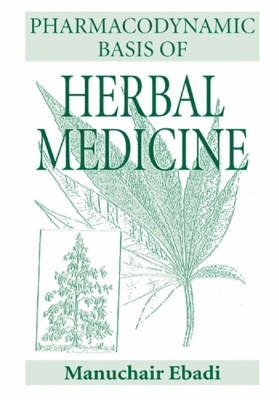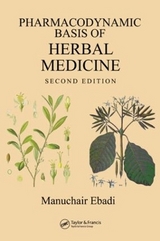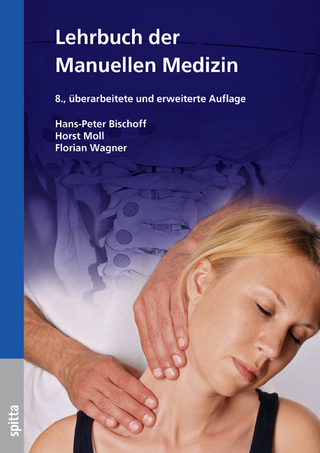
Pharmacodynamic Basis of Herbal Medicine
Crc Press Inc (Verlag)
978-0-8493-0743-0 (ISBN)
- Titel erscheint in neuer Auflage
- Artikel merken
HERBAL MEDICINE FROM A WESTERN POINT OF VIEW
Herbal remedies have become a major factor in American health care. Botanicals like Ginseng, Ma Huang, St. John's Wort, and Valerian are now household words throughout the world. Since many of these natural drugs are sold over the counter, often consumers mistakenly assume that they are completely safe. However, serious adverse effects sometimes occur, especially when taken in conjunction with prescription drugs.
Conversely, pharmacists, pharmacologists, and physicians are more hesitant to accept the beneficial effects of herbal drugs without seeing scientific evidence. The Pharmacodynamic Basis of Herbal Medicine provides this evidence and addresses other important issues in a clear, easy-to-understand manner. It breaks down herbal medications to their molecular level to show how they bring about both their healing benefits and their side effects.
MEDICINAL HERBS ALSO HAVE A USEFULNESS BEYOND WHAT THEIR OVER-THE-COUNTER FORMS PROVIDE.
Pharmacodynamic Basis of Herbal Medicine gives you a better understanding of how natural products:
Provide a number of extremely useful drugs that are difficult, if not impossible, to produce commercially by synthetic means
Supply basic compounds that may be modified slightly to render them more effective or less toxic
Are useful as prototypes or models for synthetic drugs possessing physiologic activities similar to the original drug
Contain compounds that demonstrate little or no activity themselves but which can be modified by chemical or biological methods to produce potent drugs not easily obtained by other methods
REDUCE UNWANTED SIDE EFFECTS AND ENHANCE THERAPEUTIC EFFICACY
Whether they take herbal medicine for religious, philosophical, or economic reasons, Western believers are just discovering what Eastern civilizations have known for centuries. As the use of herbal remedies grows exponentially, so too does the necessity for information on how these herbs actually work. Author Manuchair Ebadi, winner of the 2004 University of North Dakota Foundation Thomas J. Clifford Faculty Achievement Award for Excellence in Research, builds the scientific bridge between Eastern and Western medicine. For a multitude of popularly used herbs it demonstrates the beneficial effects and adverse side effects of herbal drugs, showing their actions and effects on organ, tissue, cellular, and subcellular levels. By understanding and applying the information in this book, you will be able to provide safer and more effective therapeutic care.
Ebadi; Manuchair University of North Dakota, Grand Forks, North Dakota, USA,
Alternative Therapies
Herbal Therapeutics Then and Now
Medicines Were Originally Foods
Dietary Antioxidants
Food-Drug Interaction
Herb-Drug Interactions
Natural Products as a Resource for Established and New Drugs
Herbal Products for the Chemotherapy of Human Immunodeficiency Virus (HIV) Infection
Aloe
Alkaloids
The Antifungal Actions of Manuka
Banisterine
Belladonna
Botulinum Toxin
Brussels Sprouts
Cannabis or Marijuana
Cinchona Tree
Capsicum, Rosemary, and Turmeric
Carotenoids
Coca
Chocolate and Milk Chocolate
Colchicine
Compositae
Curare
Daffodil
Ephedrine or Ma-Huang as a Decongestant and Vasopressor
Ergot and its Alkaloids
Folate in Fruits
Flavonoids
Foxglove, Cardiac Glycosides, and Congestive Heart Failure
Ginkgo Biloba
Ginseng
Green and Black Teas
Horseradish
Hypoglycemic Plants
Hypericum
Ipecac
Kainoids
Lycopene
Marine Therapeutics
Morphine
Oat
Olive and Olive Oil
Onion and Garlic
Pilocarpine
Plantain has Immunoenhancing Actions
Pycogenol
Pygeum Africanum for the Treatment of Patients with Benign Prostatic Hyperplasia
Reserpine
Rhubarb
Saffron
Salicylate
Sheng Jing
Steroids from Sponges
Taxol
Tuberculosis
Herbal Medicine and Ulcer Therapy
Valerian for Sleep Disorders
Wine
Yogurt
HERE'S A GLIMPSE OF WHAT YOU'LL FIND:
The Pharmacodynamic Basis of Herbal Medicine:
Provides the mechanisms of action for meadow saffron and provides evidence that it possesses colchicine, an antigoutic medication
Shows that belladonna contains anticholinergic drugs used to suppress Parkinson's disease
Shows how rauwolfia serpentina reduces blood pressure because it contains reserpine
Compares the actions of fluoxetin with St. John's Wort
Compares the hypnotic and sedative actions of Valerian with those of benzodiazepine derivatives
Describes the existence of drugs isolated from food substances such as Horseradish, Garlic, and Rhubarb, and provides their mechanisms of action
Describes the efficacy of Shing Jing in male infertility and erectile dysfunction and compares it with levodopa, amylnitrite, vitamin E and sildenafil (Viagra)
| Erscheint lt. Verlag | 26.12.2001 |
|---|---|
| Zusatzinfo | 3 Halftones, black and white; 151 Illustrations, black and white |
| Verlagsort | Bosa Roca |
| Sprache | englisch |
| Maße | 178 x 254 mm |
| Gewicht | 1542 g |
| Themenwelt | Medizin / Pharmazie ► Naturheilkunde |
| ISBN-10 | 0-8493-0743-0 / 0849307430 |
| ISBN-13 | 978-0-8493-0743-0 / 9780849307430 |
| Zustand | Neuware |
| Informationen gemäß Produktsicherheitsverordnung (GPSR) | |
| Haben Sie eine Frage zum Produkt? |
aus dem Bereich



